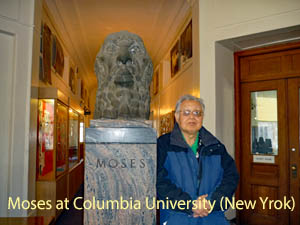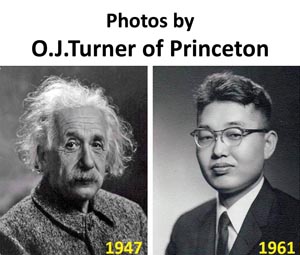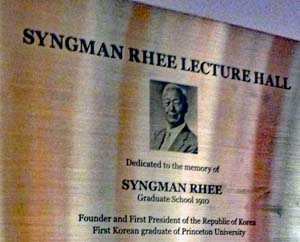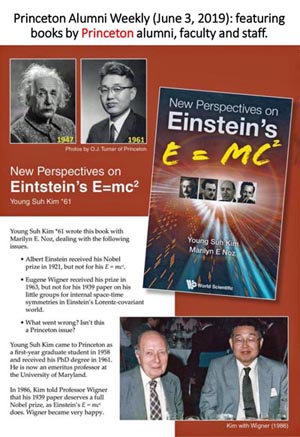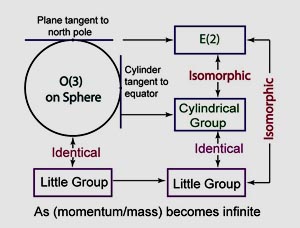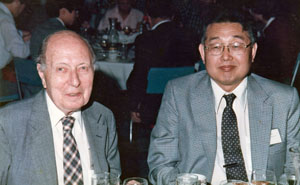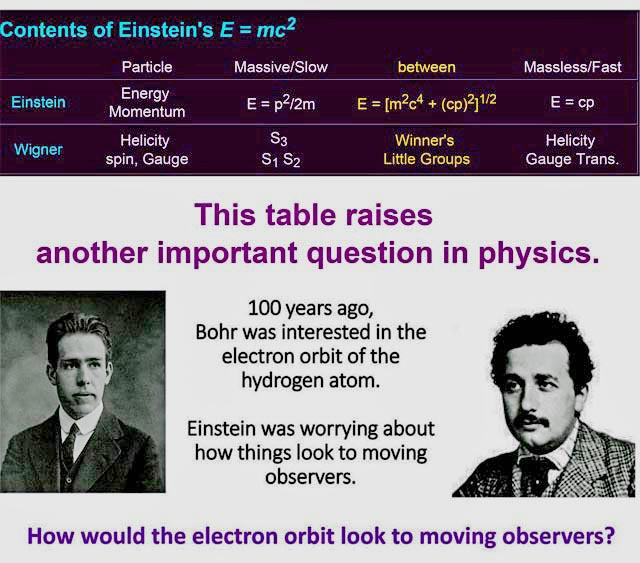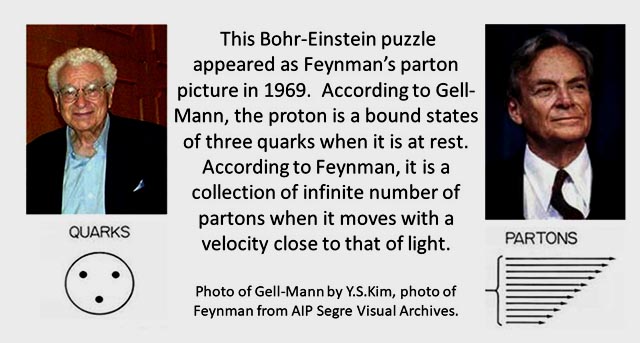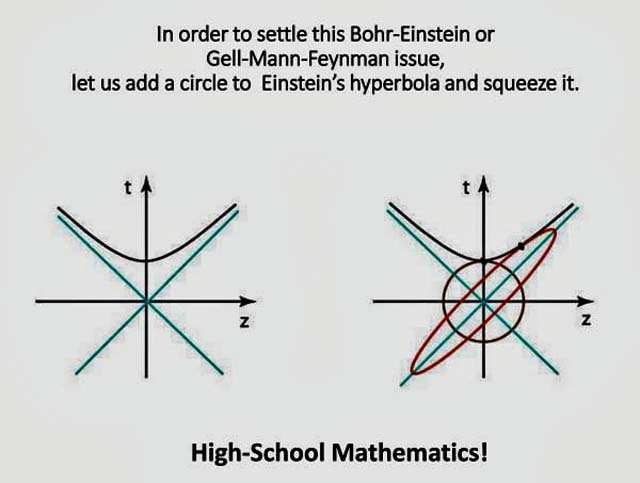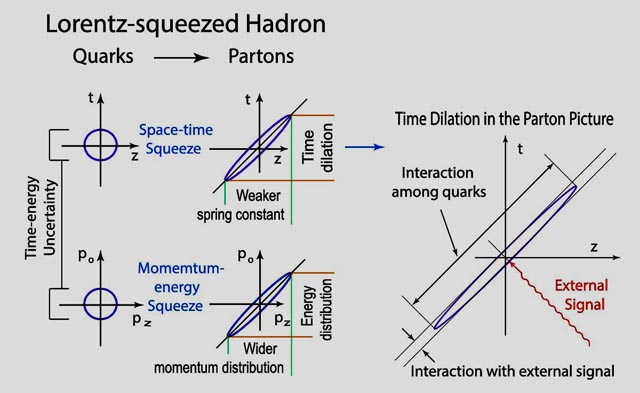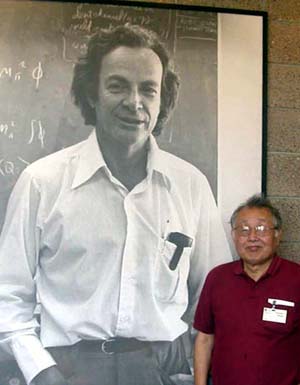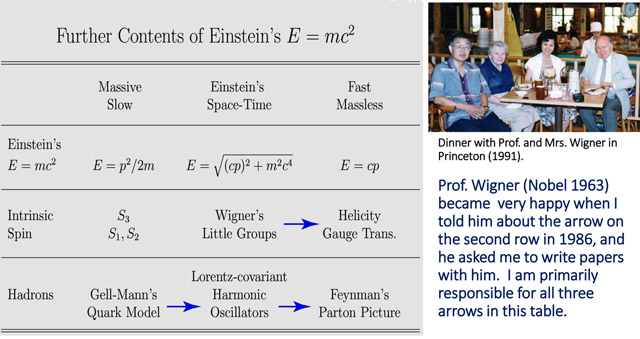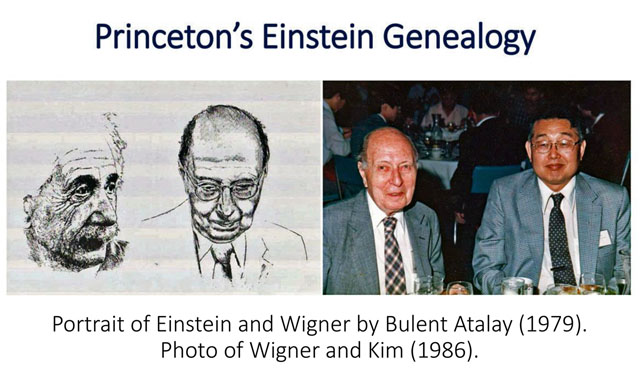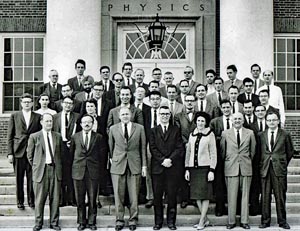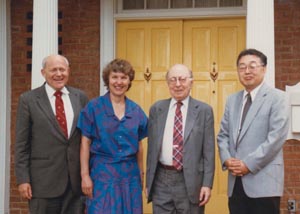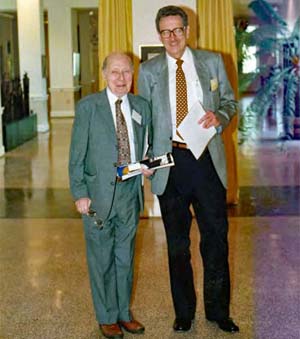My Korean Background
- I came to the United States from Korea in 1954 after high-school graduation.
I could be less than fully honest if I tell you there were no discriminations
against me.
For instance, my American classmates used to tell me Koreans do not have
brains good enough to make nuclear bombs. During the political crisis in Korea
(1960-61), my American friends told me the best solution is give Korea to Japan.
In 1965, Princeton found a young genius named Roger Dashen, and he was appointed
to the highest ranking member at Princeton's Institute for Advanced Study (Einstein's
place). I naturally become unhappy if hear that anyone else in my generation is
smarter than I am. Click here to see why.
In 1966, I published papers showing his key paper
is wrong. The initial reaction from the American physics was "Dashen is a
genius, but you are only a Korean."
I can mention many more, but let me stop here. In spite of all
these prejudices, I think I did OK in moving up through the social
ladders in the United States, thanks to my Korean background,
including my unusually strong Christian background built upon the
traditional Confucian base.
So, how high am I in the social ladder? On January 20, 2021, the Wall Street
Journal published the following table.
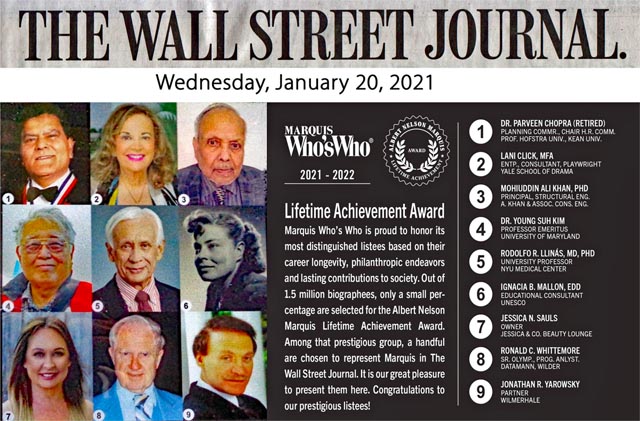
- In addition, I had an excellent high-school education in Korea. I liked
mathematics throughout my high-school years.
Indeed, these elements enabled me to talk to Einstein (go back to the top of
this webapge). This is a rare privilege for the people of my generation. Let me
spell out my Korean backgrounds.
1. Educational Background
- You have seen the circle, ellipse, and hyperbola in the figures given above
to illustrate
further contents of Einstein's E = mc2.
Let us look at the following figure.
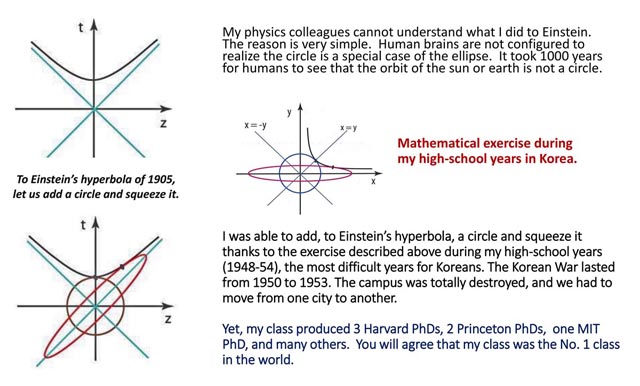

|
In this photo of 1954, I am shaking hands with
General Maxwell Taylor, the commander
of the U.S. forces in Korea. Under him were more than 300,000
combat-ready U.S.troops.
I am in my high-school uniform.
|
- If you did not hate mathematics so thoroughly during your high school years,
you should know the equation
is for the hyperbola.
- The equation for the circle takes the form
Let us next write another equation:
When b = 0 , this equation is for the circle.
As b
increases from zero to a positive number, the circle
becomes squeezed to the ellipse
as shown here.
- Exercise: The circle is tangent to the hyperbola at x = 0,
when b = 0
The tangential point moves along the hyperbola when b
increases. Find the exact location of the tangential point as a
function of b.
I did this exercise during my high-school years (1951-54) in Korea,
during the period of
the Korean War (1950-53).
2. Christian Background
- My Korean background includes a strong Confucian influence. At the beginning
of this webpage, I talk about how Moses talked to God. This means that I also
have a strong Christian background.
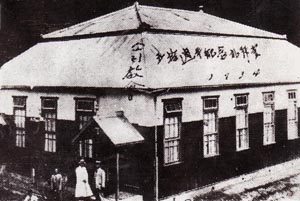
|
The Sorae Church I used to attend until May 1946.
My grandfather was one of Horace Underwood's trusted Korean friends. In 2003,
I had a lunch with Underwood's youngest grandson at a Korean restaurant in
Urbana, Illinois.
|
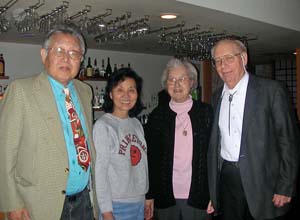
|
|
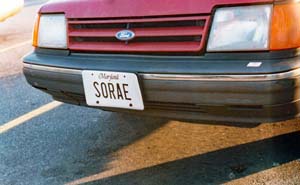
|
My car license plate in USA proudly says "Sorae."
|
- I was born and raised in a Korean village called "Sorae" where Koreans
built their first Presbyterian church in 1884. The first church building
was like a private house.
The second building, built in 1909, was like a Buddhist temple. The third
church building was built in 1934, and it was a shiny modern building with
many glass windows. Click here for
those buildings.
- Horace Underwood was the first Presbyterian missionary who went to Korea
in 1885. He built his villa at a scenic beach called "Kumipo" near Sorae.
His family used to come to this Sorae church during the summer months.
- My grandfather was one of the major contributors toward the construction
cost for this stylish church bundling of 1934.
The Underwood family donated window glasses (very costly at that time).
My grandfather was one of Underwood's trusted Korean friends.
- This church building had two separate doors: one for men and boys and
the other for ladies and girls. They had to sit on separate floors inside.
When I went to the church with my mother, we had to enter through separate
doors. My mother was the organist for this church. The church has an
impressive-looking foot-driven organ.
- My grandmother told me many Bible stories.
- It was exciting to hear Moses dividing
the ocean. I never figured out how he did, but I figured out how Moses
talked to God. He wrote five books about God which became the first
five books in the Old Testament. As I said above. I talked to Einstein
by stressing that he deserved one full Nobel prize for his E = mc2,
and gave my explanations of why.
- She told me I have one less rib in my chest, because God pulled out one
rib from Adam's chest to make a woman. I used to believe her story until
2005 when I looked at my chest X-ray photo. Alas I have the same number
of ribs on both sides. This means that God pulled out two ribs, one from
each side. I then looked at my photos with girls and ladies around the
world. I noticed I am much happier with two women in the photos. Thus,
using the internet technology, I was able to create
my own Garden of Eden.
- Herod Complex.
I heard Christmas stories from my grandmother and from many others.
The story of King Herod was particularly interesting.
The society of academic researchers is extremely competitive.
Your colleagues cannot afford you to become more famous than they are.
They become your enemies once you become more famous. However,
you can live happily if you know how King Herod reacted after hearing
a new king (other than himself) was born.
When I started going out with Wigner in 1986, and thus started getting attention
from the physics community, many people became very unhappy. Among
them were Arthur Wightman and Louis Michel. Wigner thanks them in the
English edition of his book entitled "Group Theory and Its Applications
to the Quantum Mechanics of Atomic Spectra."
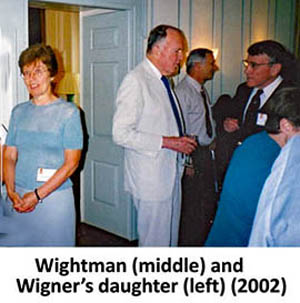
|
I must have been close to both Michel and Wightman
because I took these photos with my cameras. They became quite upset
when I approached Wigner directly without their clearance.
|
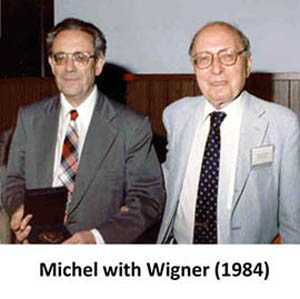
|
- Wightman was a professor of physics at Princeton, and he took over
Jones professorship held by Wigner before he formally retired from the
university. He had
enough reason to regard himself as the person in charge of Wigner. In 1961,
he gave a series of lectures on Wigner's 1939 paper. I was in his class and
I learned many things from him, and I still like him.
He became very unhappy with the table given above, and wrote me a letter telling
me it was wrong and I should withdraw it from the literature. Since his office
was in the same building where Wigner's office was, he must have told Wigner
the same story. Yet, Wigner was on my side.
- Louis Michel was a very distinguished mathematical physicist, and I also
learned about Wigner's 1939 paper from him when he spent one semester
at the University of Maryland in 1972. He gave a series of lectures on
the Wigner stuff. He also told me the table given above is wrong, and
wrote the president of my university to reduce my position. However,
my president stood with me.
- There were many others who became furious when I was going out with
Wigner, including some in my own department. They are not worth munitioning.
Michel and Wightman were big enough to behave like
King Herod, but those small people were like worms.
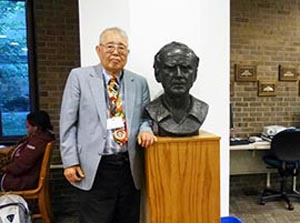
|
Dirac's bust at the Fine Hall Library of
Princeton University.
|
- Nicodemus meets Jesus. The story of
Nicodemus in the Gospel of John. When I got my degree in 1961,
I was forced to believe that origin of physics comes from singularities
in the complex plane. I did not like this environment.
Click here to see how much I disliked.
Fortunately, in 1962, I met Paul A. M. Dirac. He gave me enough wisdom
to continue my research until today. It was like Nicodemus meeting Jesus.
Click here to see how I met Dirac in
1962.
3. Confucian Base
Einstein was an oriental philosopher. Did you know?
- In addition to this strong Christian background, I do have a strong Confucian
base. People usually say Confucianism is anti-scientific. I disagree.
Einstein was an oriental philosopher.
Confucius was a Chinese scholar during the 5th Century BC. He wrote down a
set of rules humans obey to maintain the social order. For instance, young people
should respect elder citizens. Ministers should be absolutely loyal to their king.
Confucianism served as the constitution of the Han Dynasty in China (200BC-200AD)
creating the Chinese civilization as known today.
|
|
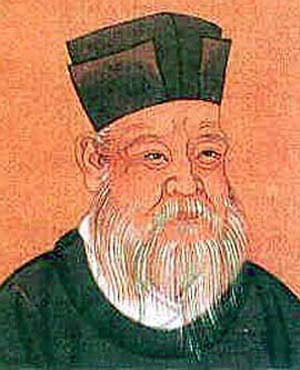
|
Zhu Xi (1130-1200 AD) reformulated Confucianism by adding another Chinese philosophy
called Taoism. He is called Ju Hee in Korean, and his neo-Confucianism called
Joo-Ja-Hak in Korea. Koreans adopted his version of Confucianism with many
Taoist elements
This is the reason why Korea's national flag reflects the core of Taoism calling for
the harmony of two opposing elements.
|
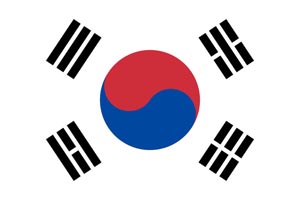
|
After many chaotic years after the collapse of the Han Dynasty, Chinese were
able to set up another dynasty called Tang (600AD-900AD). During this period,
Confucianism went through evolutions.
Confucius says you should do this and you should not do that, but he does not
explain why. During the Tang period, scholars started explaining why you should
do this and why you should not do this. They added reasonings to the Confucian
rules.
In so doing, those scholars had to borrow the ideas from Taoism.
The origin of Taoism is very simple. After the ice age, many different people
came to the banks along the northern river, known as the Yellow River, to
to live together. They could not communicate and thus drew pictures. This is
how the Chinese characters were developed. In order to express their emotions,
they had to sing. This is the reason why Chinese spoken language has tones.
How about different ideas? Like these days, there were many different ideas.
Those ancient Chinese divided those two opposing groups: plus and minus.
They thought the world could be perfect whatever-plus and whatever-negative
can exist in harmony.
This is the basis for the philosophy of Taoism. If Confucius tells you do
to this, you are allowed to raise an opposing view and figure out the best
solution for you and the rest of the world.
This new version of Confucianism was documented by a
Chinese scholar named
Zhu Xi (called Ju Hee in Korean) in the 12th Century. This neo-Confucianism
became very attractive to Koreans. They call this ideology Juja-Hak, and became
the constitution of Korea's last dynasty which lasted longer than 500 years
(1392-1910). Thus, Koreans are Taoists as well as Confucians, as they
demonstrate strongly in their national flag.
|
|
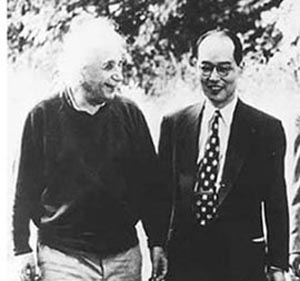
|
Einstein very happy with a Taoist physicist named Hideki Yukawa,
who received his Nobel prize in 1949. Have you ever seen Einstein's smiling face?
Einstein's coordinate among the Western philosophers.
|
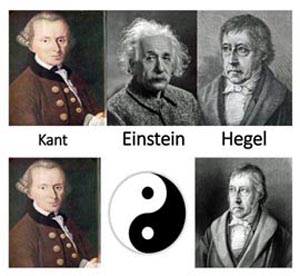
|
- Let us look Western philosophy. There are many philosophers we can mention
from Socrates to Sartre. Among them, the most influential figures were Immanuel Kant
and Georg Wilhelm Friedrich Hegel. According Kant, there is only one thing:
Ding-an-Sich, even though they are different. They are different
because observers look at it differently. According to Hegel, it is possible
to create one great thing by synthesizing two different things. He mentioned
Christian world as a synthesis of Jewish ethics and Greek philosophy.
Thus, with a Korean background, it is easy to place Taoism between Kant and Hegel.
Instead of making making all things into one as Kant did, Taoists can put many
different things into two groups. We can then invite Hegelianists to synthesize
them into one.
Albert Einstein started as a Kantianist. He studied Kant intensively during his high
School years. This in why he thought things look differently to moving observers.
However, he became a Hegelinist when he synthesized the physics of
massive particles and that of massless particles, and when he synthesized particle
nature and wave nature of the matter.
- We can illustrate Kantianism, Taoism, and Hegelianism with the following table.
It is then easy to see where Einsetinism stands.
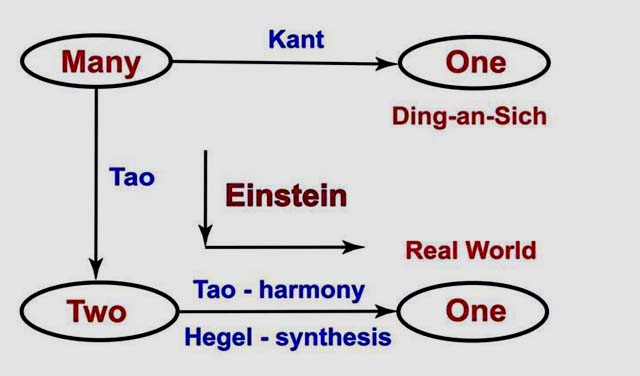
- We all know how Kant developed his philosophy based on his geographical environment.
It is then easy to see how ancient Chinese developed their Taoism.
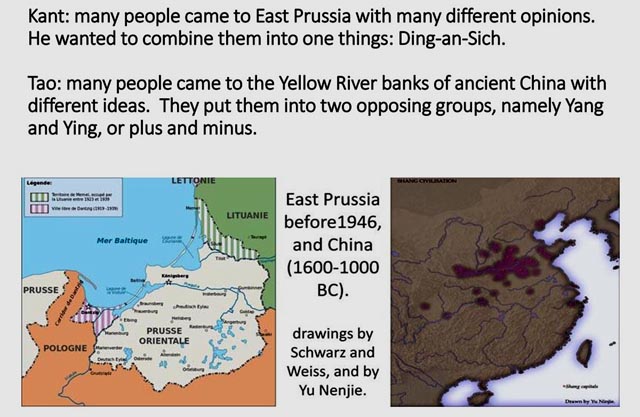
Those Chinese from different areas wanted to communicate with others by drawing pictures.
This is how Chinese characters were developed. They also sang to express their feelings
to others. This is the reason why spoken Chinese language has tone.
- Kant Museum in
Kalininggrad (Koenigsberg before 1946) and
Hegel Museum in Stuttgart (Germany).
Kant and Hegel are born in Kaliningrad and Stuttgart respectively. Understandably
those cities are proud of producing those two great philosophers, and maintain
museums dedicate to them, namely Kant Museum in Kaliningrad and Hegel Museum in
Stuttgart.
I went to both places, and I was interested in books written about them
displayed at the museums.
|
|

|
One of the books on Kant written in English at the Kant Museum
in Kaliningrad, Russia. This city used to be an East Prussian city of Koenigsberg
until 1946. Kant spent his entire life of 80 years in this city.
|
|

|
Books written on Hegel's philosophy in Japanese (standing) and Korean (flat) at the Hegel
Museum in
Stuttgart, Germany. This city is better known as the home base for Mercedes-Benz
cars. Hegel was born in this city in 1770, but became big enough to become the chairman
of the philosophy department at the Humboldt University of Berlin.
|
|

|
Ronald Reagan was a movie actor before becoming a politician.
|
-
I went to both places, and I was interested in books written about them
displayed at the museums. There are books written in many different languages.
At the Kant Museum, there are
many books in Japanese, in addition to those in German and Russian. At Hegel Museum,
there are many books written in German. There are also a number of books in Korean.
Alas, in these museums, I was not able to see books in English.
This presumably is the reason why Einstein was not able to talk with English-speaking
Americans while in the United States. I assume this is the reason why American
physicists could not locate Einstein's coordinate among philosophers.
- When I raise the issue of Kant and Hegel with my friends in philosophy, they
tell me I do not know anything about their subject, and I should therefore shut up.
However, I cannot understand how one can do philosophy without understanding
Einstein.
- Ronald Reagan was the president of the United States from 1981 to 1989. He
had an unusual professional background. He was a movie actor. Thus, reporters
asked him how he became the president with this non-respectable background.
Reagan's reply was very simple. "I do not know how one can become the president
without acting background."
With his acting background, he acted like a king throughout his presidency, and he
became very popular among Americans. Washington's airport is called "Ronald Reagan
Airport." Washington's largest office building carries his name.
- What did Karl Marx say about philosophers?
Click here
- Conclusion. I enjoyed being a Korean throughout my life in the United States.
From their ancestors, Koreans inherited their great tradition. They work hard.
The United Sates rewards hardworking individuals.
|
|
